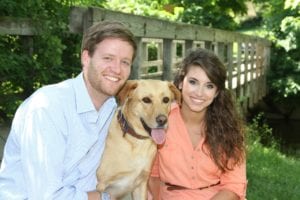
Congratulations to Dr. Sarah Howle on being nominated as orthodontic resident of the year in the JCO! Out of every orthodontic resident in the United States, only a select few were nominated for this prestigious award. This award is presented by American Orthodontics, and is the official 2017 Eugene L. Gottlieb JCO Student of the Year Award. Learn more about Dr. Sarah by reading her interview below.
Can you tell us a little about yourself?
My father’s family is Cuban, my mother’s family is extraordinarily Southern, and I am a California girl currently living in the palm of the “Mitten State”. I was born in San Diego to a naval physician and a hardworking homemaker. I have two older sisters who are also in the dental and medical fields. During my childhood, we relocated to the Peanut Capital of the World: Dothan, Alabama.
In 2010, I received a psychology degree from the University of South Alabama in Mobile. I then earned my DMD from the University of Alabama at Birmingham in 2014. Since that time, I’ve been attending the University of Michigan, where I will graduate in June with a master’s degree and specialty certificate in orthodontics.
In our free time, my husband and I enjoy doing anything outdoors, from biking and hiking to kayaking and diving. We have a yellow lab, Reef, who shares our love of the outdoors.
Why are you pursuing a career in orthodontics?
I entered college thinking I’d like to pursue a career in plastic surgery to perform cleft lip and palate repairs. After shadowing in several operating rooms, I realized I probably wouldn’t make it very far if the smell of a cauterizing needle made me faint. Around that time, my older sister had started dental school, so I explored that option. I shadowed several dentists and specialists and decided to apply. During dental school, my curiosity of orthodontics converted to enthusiasm. I am intrigued by the complexity of treatment planning and enjoy seeing dramatic patient transformations. Additionally, orthodontics still allows me to treat cleft patients in collaboration with a craniofacial team. I’m so grateful to be part of this amazing field!
Can you describe the path that led you to the University of Michigan?
I applied mostly to schools in the Southeast. I added the University of Michigan to the list because another colleague had encouraged me to apply there. I didn’t know much about the program at the time, but after visiting for my interview, it became clear that this was the best program for me. I truly believe that my training here has given me a solid foundation in our field, with exposure to a variety of philosophies and techniques. Although I feel that my training was very thorough, I still have so much to learn from my mentors, colleagues, and patients.
What has surprised you the most during your orthodontic education?
That the Big House will allow you to put a mechanical bull in the club seating area for Graduate Orthodontics Residents Program (GORP)? Just kidding! Maybe the fact that there are do-it-yourself orthodontic companies who will approve treatment remotely, without ever physically seeing a patient. This terrifies me for the public’s sake.
What has been the most difficult part of becoming an orthodontist?
Probably going through dental school. I am so glad there are other clinicians dedicated to doing root canals or fabricating dentures! However, I have absolutely loved everything about orthodontics so far.
What, so far, has been your most rewarding orthodontic experience?
I can’t pick just one. Patient reactions on debond day, opting for a more difficult treatment plan to save a family thousands of dollars from future implants, drastic transformations on surgical cases, and helping to plan GORP.
Please briefly describe your most difficult residential case.
It was a craniofacial case where the patient refused to keep up on oral hygiene, so I had no choice but to debond. In Michigan, patients are covered under Children’s Special Health Care Services until age 21, so we are losing precious time. Sometimes it’s not the actual case that worries you, but a patient’s circumstances or attitude.
Any research projects you’d like to briefly share with our readers?
I’m studying the roles of MSX2 and Osterix in osteoblast differentiation and intramembranous bone formation. We used cre recombinase technology to perform lineage tracing experiments in our transgenic mice. I’ll be presenting my work at the American Association for Dental Research annual meeting in San Francisco.
What are your postgraduate plans?
I will be joining a private practice in Pensacola, Florida, as an associate. I’m excited to be moving to the Gulf Coast and working with such a motivated team!
What do you think orthodontics will look like in 10 years?
Our field has seen so many amazing advances in the past two decades. There’s no doubt we will continue to find more efficient ways to practice, more discreet appliances, and more ways to incorporate technological advances into our daily lives. Maybe in 10 years, we will have chairside wirebending robots, or perhaps the majority of cases will be treated with clear aligners instead.


